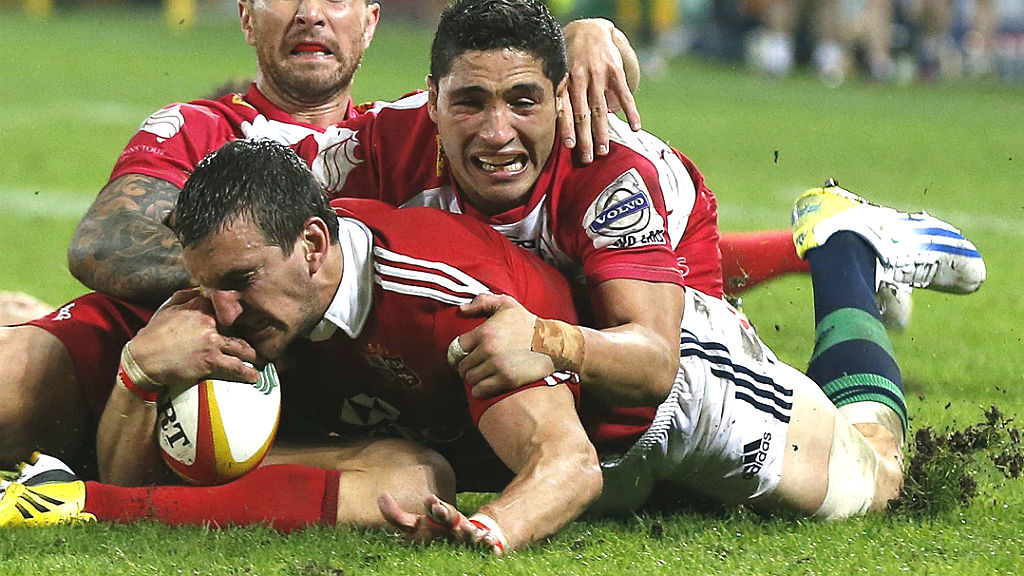Lions tourists face vital first test against Wallabies
The first rugby union test between the British and Irish Lions and the Wallabies is upon us. Can the 2013 squad emulate the 1989 Lions in Australia to become one of the greatest touring sides ever?

With the first British and Irish Lions rugby union test against the Wallabies upon us, what have we learnt about the opposition?
The answer is: not a great deal, writes Juan Ruiz. From the outset the Australians decided to withdraw all members of the Wallabies squad from sides playing against the tourists.
Consequently the teams the Lions have faced have, by and large, been made up of second-string Super Rugby players, allowing Robbie Deans, the Wallabies coach, to play his cards close to his chest.
We have been told the Australians will not adopt the sort of fast and loose game played by the Queensland Reds, under the direction of maverick ex-Wallabies fly-half Quade Cooper, in the first 20 minutes of their match against the Lions – tactics which almost blew the tourists away.
The Wallabies’ tight five (the front row and second row) are not the most imposing in the world, and the Lions will look to dominate in this area. At the breakdown, they are missing Pocock and Higginbotham, their first two open-side picks.
As for their backs, the consensus is that they have a world-class scrum half in Will Genia, quick, large wingers, and skilful centres, with a choice of two to play in the pivotal role at fly-half.
Countering threats
So what does this tell us? Which parts do the Lions management believe? And how will they look to counter these threats, real and imaginary?
Lions head coach Warren Gatland knows that, as always, the game will largely be won up front, at the set pieces and breakdown.
The Wallabies’ tight five are not the most imposing in the world, and the Lions will look to dominate in this area.
The front row will be anchored by Adam Jones at tight head, with Tom Youngs and Alex Corbisiero joining him. Corbisiero, who brings more to the team in the tight, got the nod over Manu Vunipola, despite the latter’s dynamism in the loose.
In the second row, Alun Wyn Jones was chosen over Richie Gray to partner Paul O’Connell. Wyn Jones came to the fore in the game against the New South Wales Waratahs, where he showed both his willingness to make the “hard yards” and his ball-handling skills.

Commitment and athleticism
The back row is the most competitive area within the squad, and undoubtedly presented the most intriguing selection conundrum. Sam Warburton plays as captain, certainly in the first test, with Tom Croft at blind side and Jamie Heaslip at number eight.
This gives the Lions a combination of absolute commitment at the breakdown (through Warburton), athleticism, and options at the lineout with the inclusion of Croft. Heaslip brings the bulk and “go forward” needed to get the team on the front foot from the base of the scrum.
The back row is the most competitive area within the squad, and undoubtedly presents the most intriguing selection conundrum.
Until Jamie Roberts’s injury, the backs pretty much picked themselves, with Mike Phillips and Jonny Sexton at nine and 10, and Brian O’Driscoll outside. Jonathan Davies now joins O’Driscoll in the centre.
The back three had been an area of possible conjecture. With the injury to Tommy Bowe, and with Rob Kearney coming back into the frame after injury, what seemed like a straightforward selection of George North on the wing with Bowe, and Leigh Halfpenny (above, in red) at full back, was thrown in the air.
My selection would have seen Halfpenny joining North on the wings, with Kearney coming in at full back. But Halfpenny now plays at full back behind North and Cuthbert.
Vital game
So how will the Australians look to play it? They cannot ignore the fact that the Lions – just like any other modern rugby side – can be unsettled by pace and unpredictability. They will have noticed that quick ball put wide has left the Lions floundering, and will therefore look to get their big, pacey wingers in the game as soon as possible.
They will also have seen that the Lions’ defence is vulnerable around the fringes – another area they will look to exploit. They will aim to nullify Phillips, one of the Lions’ most potent attacking threats, by getting in his face early on.
The Lions will look to up the pace of their game and get the ball away from the breakdown areas more quickly, enabling their backs to come on to the ball with pace and at more destructive running angles.
The tight five must do their job in the set pieces in order to release the back row talent at the Lions’ disposal, both on the field and on the replacement bench. They know they must take the game to the Aussies and front up across the park – otherwise they will be consumed by the opposition and the crowd.
This first test is probably the most important game of the whole tour. The Lions must win it if they want to win the series – coming back from defeat as a touring side and winning the series would be an almost insurmountable mountain to climb.
But I believe there is a building belief in the Lions squad and, just as importantly, a depth of talent which just tips the scales in their favour. It will be incredibly tough, but my hope is that the 2013 Lions will come to be mentioned in the same breath as the ’89 Lions tourists – as heroes for the cause of great touring rugby.